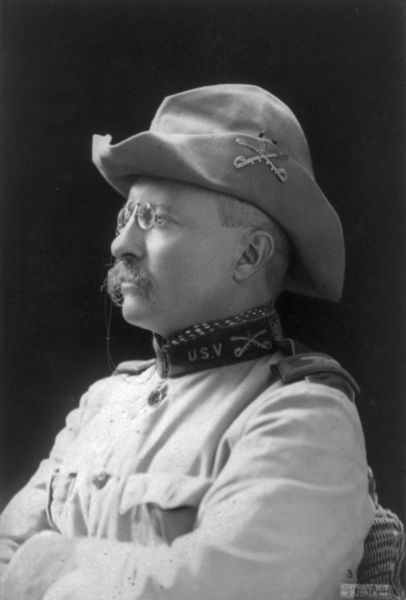Throughout his life, Theodore Roosevelt and conservation were never far apart. From his earliest years in the Roosevelt household in New York City, he witnessed firsthand efforts to preserve and study nature. His father – Theodore “Thee” Roosevelt, Sr. – was a wealthy New York philanthropist, whose list of causes included being a co-founder and director of the American Museum of Natural History.
As a young, sickly boy with severe asthma and other maladies, Teddy was forced to spend many of his tender years stuck inside with books and tutors. When he was eight years old, he saw the head of a seal (which had been washed ashore nearby) at a market. After bringing the seal’s head home, he coerced two cousins into helping him open the Roosevelt Natural History Museum, circa 1867. Having awakened within himself a new, lifelong fascination in zoology, he pursued the task with uncommon ferocity. He spent hours observing, collecting, studying, animals and insects, painstakingly recording his observations in countless notebooks. Although his earlier notebooks are written in a childlike manner, as his maturity and wisdom grew, so did his scientific writing ability. This early exposure to nature – in all its glory – led to Teddy’s insatiable love for the outdoors, and all its inhabitants.
During his years at Harvard, Teddy continued his collecting and observation, along with admirable skill in taxidermy. When he was elected the state legislature in New York (1882) he realized he would no longer have the time necessary to act as curator, so he closed his ‘museum’, donating most of his collection to the Smithsonian Institution. In 1887, Teddy co-founded the Boone and Crockett Club with George Bird Grinnell, editor of “Forest and Stream” magazine. Under their direction, the club supported the ideas of forest management, restricted natural resource use, game habitat preservation, and clean water. But the duo’s most admirable accomplishment was their successful campaign to save the newly-threatened Yellowstone Park. Despite having been designated as a national park, mining and railroad magnates threatened to destroy the precious sanctuary. Enraged by this possibility, Grinnell and Roosevelt wrote editorials, lobbied Washington’s rich, and gave speeches to the politically powerful. As a result of their efforts, President Grover Cleveland signed a bill, protecting Yellowstone, in 1894.
The Theodore Roosevelt conservation movement began when he took office as president. Once he became president, Roosevelt created a whopping 50-plus refuges for wildlife, beginning with the Pelican Island Bird Reservation of Florida, established in 1903. In 1905, he formed the U.S. Forestry Service, appointing Gifford Pinchot as chief; subsequently, the U.S. forest reserves quadrupled under his presidency, to more than 194 million acres. Teddy also signed legislation which established national park units in Oregon, the Dakotas, Colorado, and Oklahoma. At the close of 1906, he had already designated four national monuments in Wyoming, New Mexico, and Arizona. In fact, he also deemed a majority of the Grand Canyon as being a national monument, in 1908. In total, under his careful watch, he signed 18 national monuments into law, ensuring that future generations would have the chance to appreciate the beauty of our country as he had.
Passing the Antiquities Act of 1906 allowed Theodore – and all of his successors – to designate anything in federal ownership considered to be landmarks, prehistoric or historic structures, and other historically- or scientifically-relevant items as national monuments. His broad, sweeping conservation policies were the precursor for the National Park Service (or NPS), established in August 1916. Theodore Roosevelt: conservationist, nature preservationist, and environmental activist, well before anyone knew what the terms meant, made a lasting impact on this country and its natural legacies.

